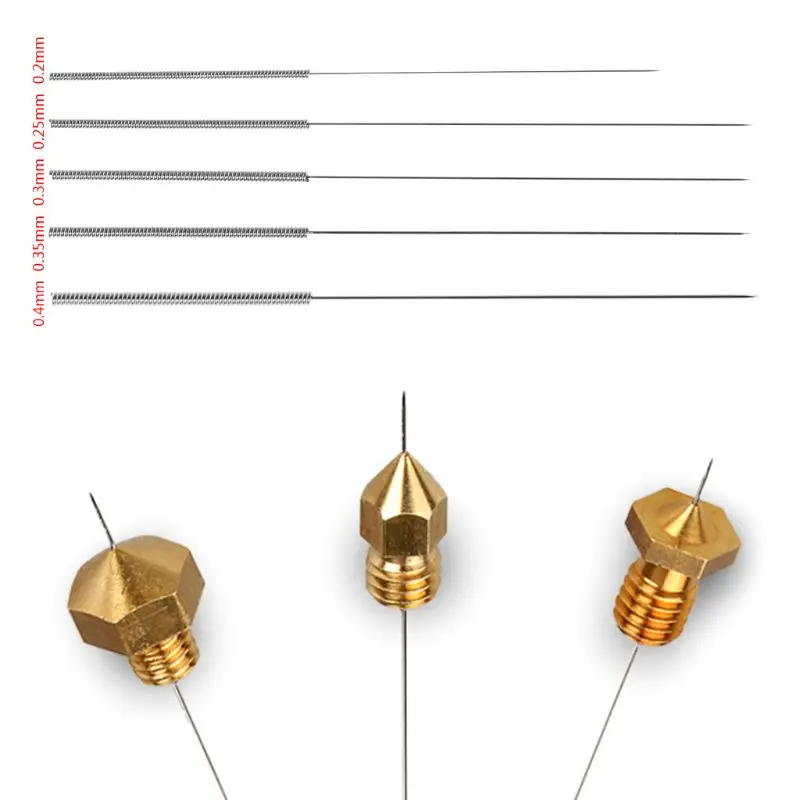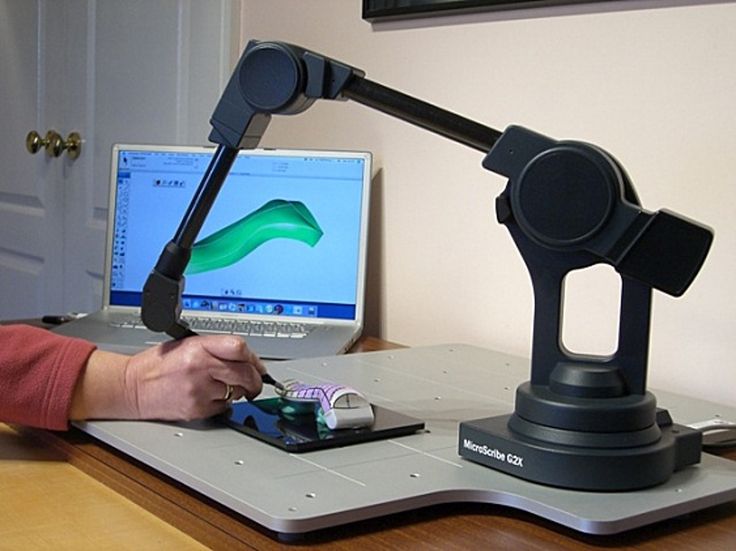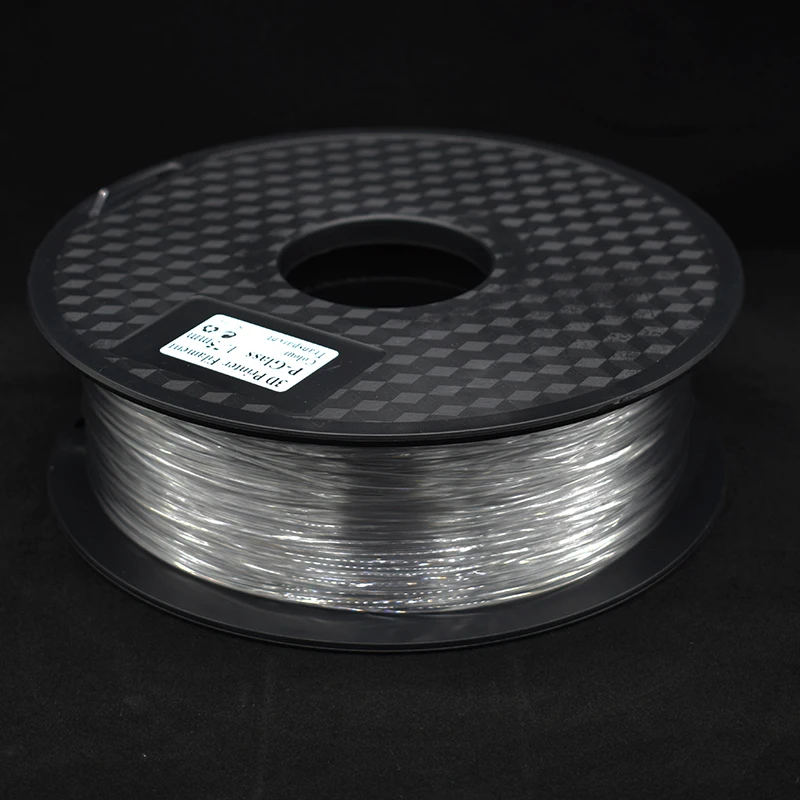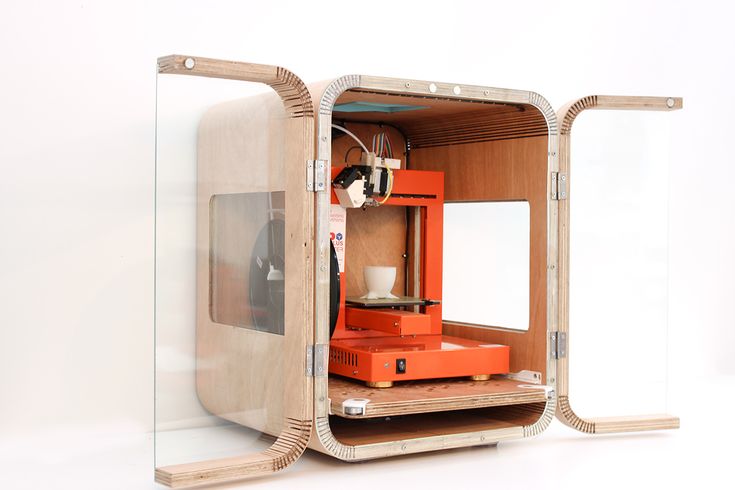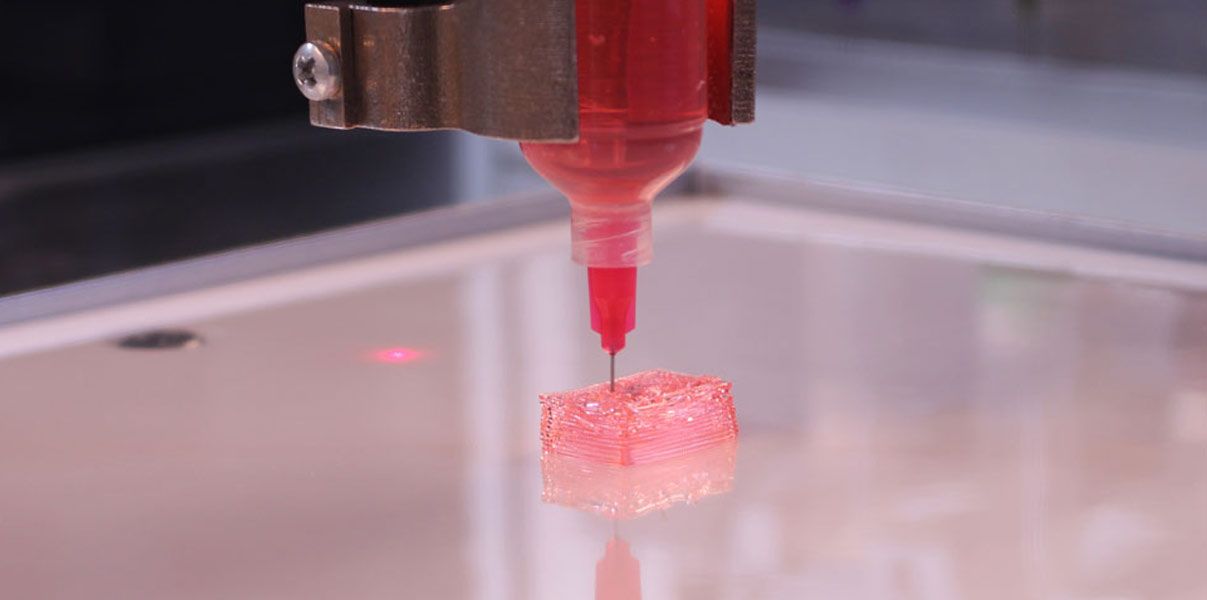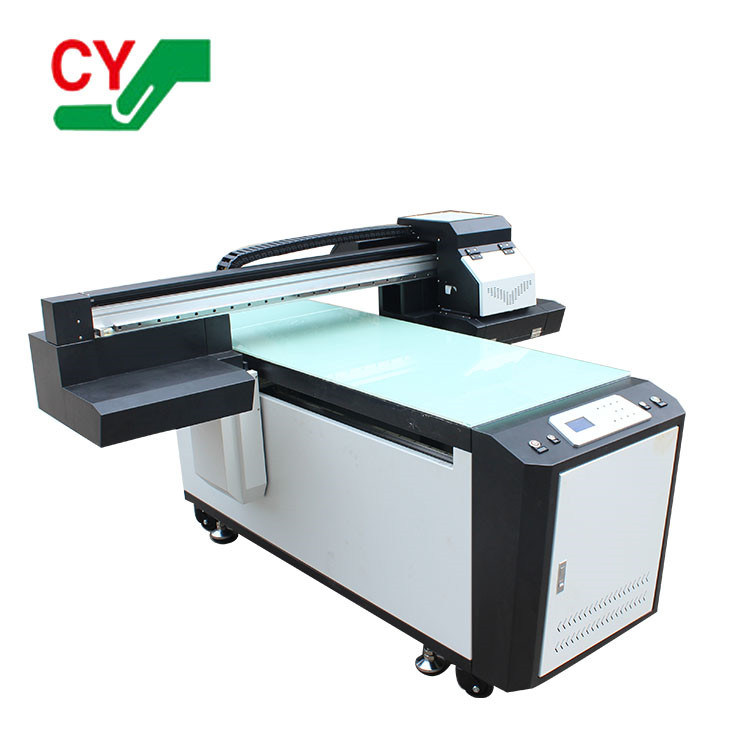Da vinci mini wifi 3d printer
XYZPrinting Da Vinci Mini Review 2022
Heard about XYZPrinting Da Vinci Mini 3D printer? We did as well and decided to test one of them to see if they're worth it. Here are our findings!
By Justin Evans
4
See Price
So you’ve decided to get into the world of 3D printing. Where do you begin? There are printers for every possible requirement, and there’s a lot of jargon floating around that makes it hard to accurately compare different models. Relax – we’re here to help.
XYZPrinting is known for creating some of the best entry-level 3D printers around. Today, we’ll be looking for any strengths or weaknesses that the Da Vinci Mini might have– it’s a small printer, but it’s certainly capable. However, is it right for you and your needs? You’ll have to read on to find out.
| Filament Diameter | 1. |
| Extruders | 1 |
| Supported Materials | PLA |
| Connectivity | USB, WiFi |
| Printing Speed | 100mm/s |
| Build Volume | 5.91 x 5.91 x 5.91” |
Table of ContentsShow
Design
The XYZPrinting Mini comes pre-assembled, so there’s no need to factor in build time. It’s a small-sized unit, perfect for sitting on your desktop, but this does mean that the build area is similarly restricted. Don’t get us wrong – you’ll be able to print decent-sized models, but nothing too huge.
Notice how there’s no enclosure? This means that it’ll be a little louder when you print, but all things considered, it’s still fairly quiet since the mechanical parts are mostly covered by the plastic frame. There are also implications for heat retention, but that’s not an issue, as we’ll explain later.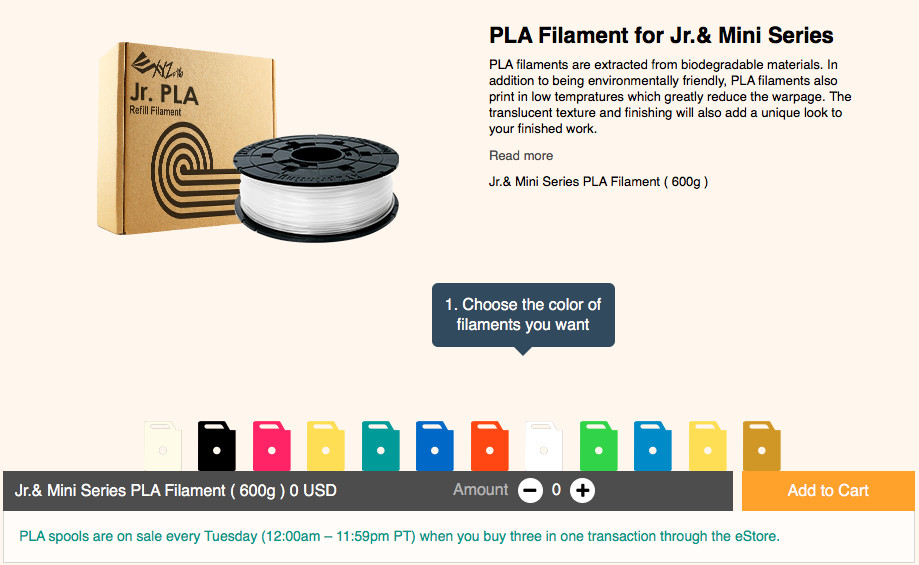
You get exactly what you’d expect from a low-end printer: there’s a single extruder and a maximum speed of 100mm/s. This is fairly standard and just means that you’ll take slightly longer to print. However, as the build area is only around 6” in each direction, you won’t be waiting hours unless you’re trying to print a large, solid cube.
Printing
There are three different speeds to choose from. As expected, the faster you print, the rougher the final quality. We found that the fastest setting resulting in significant stepping on curved surfaces, while if you allow it to take its time, your models look far better, but still not professional-level.
In an attempt to keep things as simple as possible for new users, XYZPrinting has limited the Mini to using PLA filaments. This removes the need for an enclosure but does restrict you somewhat in terms of the things you can build. Still, for beginners, PLA is more than enough to get you started.
The overall quality of the prints is too low for manufacturing, and the build volume too small for mass-production. However, it’s perfect for people looking to print things for their home or office. Better still, it takes any 1.75mm PLA filament – not just those made by XYZPrinting.
However, it’s perfect for people looking to print things for their home or office. Better still, it takes any 1.75mm PLA filament – not just those made by XYZPrinting.
Features
So what other features does the Mini have to make things easier for beginners? Well, instead of adding things, XYZPrinting has removed components. There’s no heated bed, for instance, and no built-in screen. You do have a USB connection, though, and WiFi functionality, which is almost unheard of in low-budget printers.
We were pleased to see that drivers are available for both Windows and Mac computers. On the other hand, there’s no Linux support. It supports four different file types, though, so you’re not really limited to using a particular modeling program, which is great.
Even the interface is simplistic. There’s a single button for starting a print and a status LED that lets you know how your print is going. All in all, it’s easy to use even if you’re not particularly tech literate.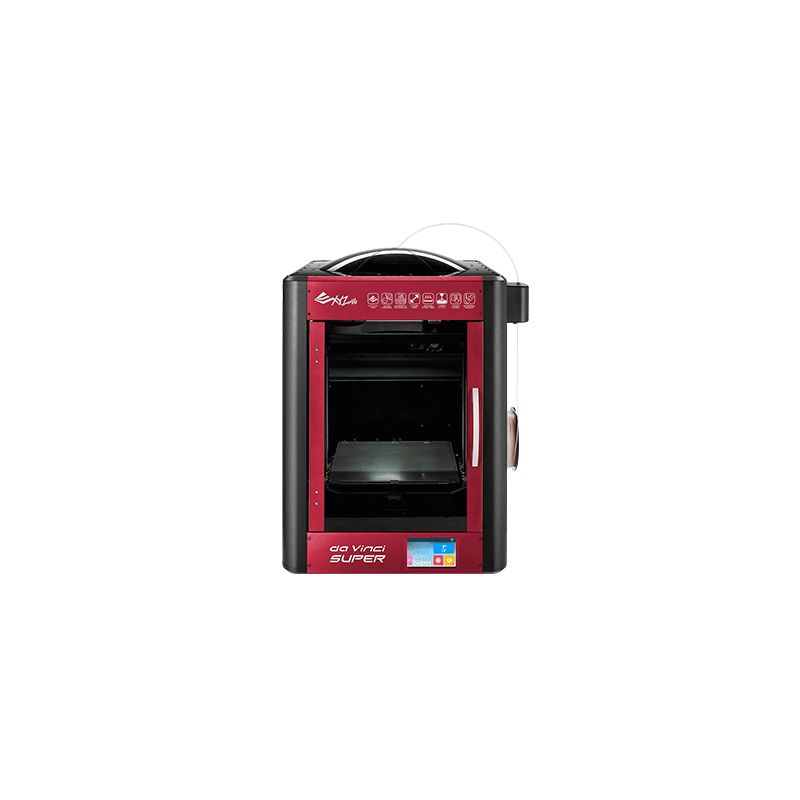 Let’s be honest – that’s never a bad thing.
Let’s be honest – that’s never a bad thing.
Cost
Here’s the thing: the Da Vinci Mini isn’t available in the United States. You can buy it from several European locations, though. It costs around $700, which makes it among the cheapest, most robust 3D printers we’ve covered. Of course, you’ll have to find a company to ship it over if you’re in the US.
Running costs are minimal. PLA is among the least expensive materials you can use, and since while third-party filaments aren’t supported, you can easily mod it to accept them. Large spools of PLA often cost less than $20 so really, your monthly material costs will depend on how often you print.
We think that this 3D printer is appropriately priced. It’s clearly intended for novice users, and the price point helps it stay affordable, unlike more advanced printers that offer user-friendly features. You’ll likely outgrow it in a year or two, but until then, it’ll serve you well.
Support
XYZPrinting’s support section provides customer help telephone numbers for 11 different countries. Best of all, each of these can talk to you in the native language or English. This is almost unheard of, and we’re genuinely delighted to see this level of help being offered for free.
Best of all, each of these can talk to you in the native language or English. This is almost unheard of, and we’re genuinely delighted to see this level of help being offered for free.
The limited warranty period is similarly outstanding. You’re covered from factory defects for up to two years at no extra cost, presuming you bought the printer from one of XYZPrinting’s recommended sellers. There’s no option to extend this warranty, though, which is a bit of a shame.
Customers can consult model-specific FAQs and tutorials in case they need any technical help. There are also different versions of the software, as well as documentation for each printer model here. All in all, it’s one of the most comprehensive support packages offered by any major 3D printing manufacturer.
Mendel90 3D Printer Review
XYZ da Vinci Mini 3D Printer Review
Skip to main contentWhen you purchase through links on our site, we may earn an affiliate commission. Here’s how it works.
Here’s how it works.
The da Vinci Mini offers great performance for the price, but it is limited to using filament from XYZ.
Editor's Choice
Tom's Guide Verdict
The da Vinci Mini offers great performance for the price, but it is limited to using filament from XYZ.
Pros
- +
Low-cost, high-quality printer for PLA prints
- +
Easy-to-use software
- +
Quick printing at most settings
Cons
- -
Printing at highest resolution is very slow
- -
Failed prints on some complex 3D models
- -
Supports limited print materials
- -
Only works with filament from XYZ.
Why you can trust Tom's Guide Our expert reviewers spend hours testing and comparing products and services so you can choose the best for you. Find out more about how we test.
Today's best XYZ da Vinci Mini 3D Printer deals
No price information
For more information visit their website
Priced at $270, the XYZ da Vinci Mini is a small but well-equipped 3D printer that is aimed at 3D-printing newcomers and the casual consumer.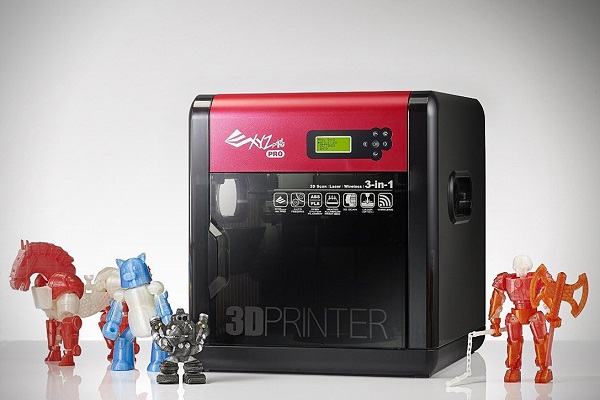 It offers a lot of printing performance for the price, producing decent quality prints at an acceptable speed. But there are compromises: the highest-quality printing is very slow, and it works only with filament from XYZprinting. Since the filament isn't expensive and comes in a good range of colors, it's an acceptable compromise. So, for most users, the da Vinci Mini could provide a good intro to 3D printing.
It offers a lot of printing performance for the price, producing decent quality prints at an acceptable speed. But there are compromises: the highest-quality printing is very slow, and it works only with filament from XYZprinting. Since the filament isn't expensive and comes in a good range of colors, it's an acceptable compromise. So, for most users, the da Vinci Mini could provide a good intro to 3D printing.
With its bright orange plastic case, the XYZ da Vinci Mini certainly stands out from the crowd of me-too black printers. (If you really want to stand out, XYZ offers a $249 education-focused version called the da Vinci minimarket that is made of multicolored plastic, like the illegitimate offspring of a Lego factory and a Terminator.)
The case covers the workings of the printer, but the print bed and hot extruder are still open to the world. A cheap fold-it-yourself plastic cover is included, but this won't stop curious fingers for long, so some caution is required with younger users.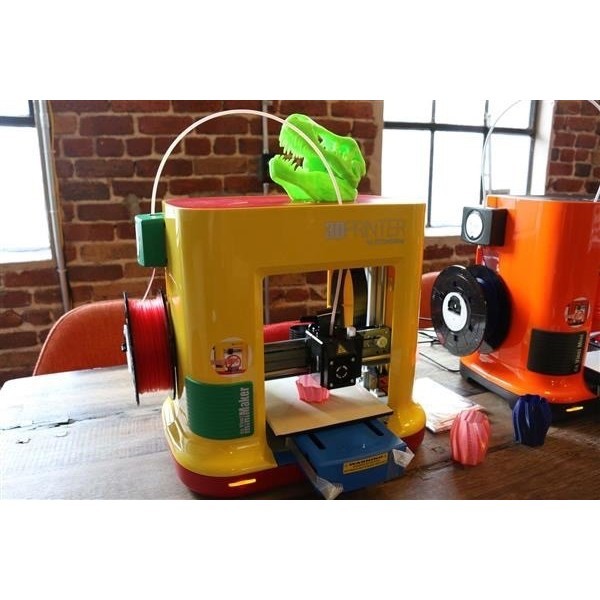
On the left side of the printer, a fold-out hook that holds the filament reel also contains an NFC card reader that identifies the filament reel to the device. This allows the printer to track both the color and how much of the printer filament is left on the reel.
At the bottom of the open space in the middle of the Mini is the print bed, a 6 x 6-inch aluminum slab covered with a sheet of tape that the PLA print material sticks to. This sheet can be easily swapped out if it is damaged while removing a print. The Mini ships with three, and replacements cost less than a dollar each.
With its bright orange plastic case, the da Vinci Mini certainly stands out from the crowd of me-too black printers.
This print bed means the da Vinci Mini can build prints up to 5.9 x 5.9 x 5.9 inches, or a little more than 205 cubic inches. That's a good size for a small printer, but it comes with one caveat: there is no heating on the print bed, so larger prints may not always stay stuck to the bed. XYZ recommends that you should apply a bit of white glue to the print bed before starting on a large print.
XYZ recommends that you should apply a bit of white glue to the print bed before starting on a large print.
Above the print bed is the extruder assembly, hidden in a black box that snaps into place when you put the printer together. This print head moves left to right and up and down, while the print bed moves forward and backward to provide the full range of movement. On the right side of the print head is a single button that lowers the bed sensor. The filament feeds through the top of the frame in a plastic tube that routes it to the mechanism that pushes the filament into the extruder.
MORE: Top-Rated 3D Printers on the Market Now
Controls: Stick with Software
The da Vinci Mini has no controls on the printer itself. Instead, everything's located in the XYZware program, available as a free download for Windows and Mac. This program is straightforward and simple to use, presenting you with a rotatable preview of the 3D model. You can scale, shift or load multiple models to print at once, but you can't edit the models.
Setup: Auto-Calibration Is Key
The da Vinci Mini is a fairly simple printer to set up, with most of the time taken up removing the multiple pieces of tape holding the various parts in place during transit. This does involve some hassle: the arm that the print head sits on has a couple of plastic tubes holding it in place that you have to yank out, making an alarming cracking noise that initially made me think I had broken something. Once I concluded that I had not, the next steps involved installing the filament spool, feeding the filament into the print head and starting the printer up.
Once you install the XYZware, the Mini can be calibrated. This is a mostly automated process: you select the calibration option in the software, and press a button on the print head when requested. This lowers a small sensor, which the printer uses to detect the print bed and ensure it is level.
That's a lot simpler than printers like the Monoprice MP Select that ask you to calibrate things manually; thus, the Mini is less prone to user error.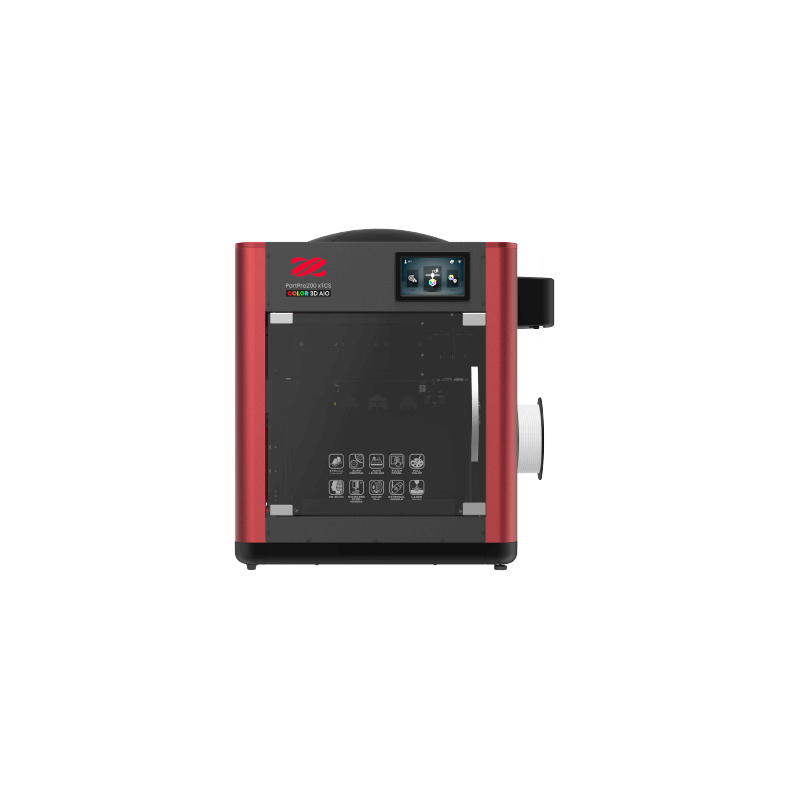 Auto-calibration also works well: we found that we needed to recalibrate the printer only when it was moved from one location to another.
Auto-calibration also works well: we found that we needed to recalibrate the printer only when it was moved from one location to another.
Materials: Pretty Restricted
The da Vinci Mini works only with PLA filament from XYZ: if you try to install a reel of third party filament without one of the NFC tags that accompanies a reel of XYZ’s own filament, the printer will refuse to accept it. As well as authorizing the filament for use, these tags contain the color of the filament, plus a running total of the amount used.
MORE: How to Buy the Right 3D Printer
XYZ currently charges $27.99 for a reel of PLA filament that holds 600 grams of material, which is comparable to the cost of most third-party filaments.
Print Process: Sticky Business
We did have some issues with prints not sticking to the print bed: we found that moderate-size prints tended to peel a little at the edges, even with the addition of white glue as recommended by XYZprinting and its software.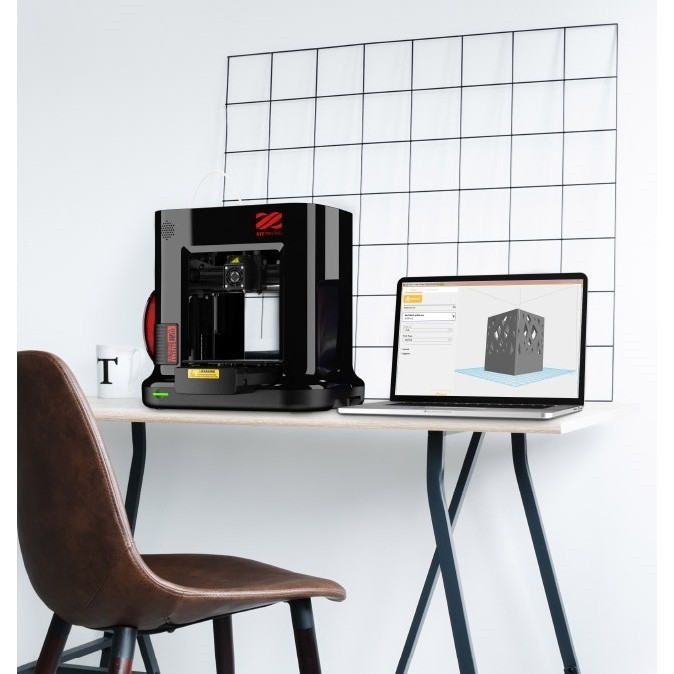 However, we found that, if the print was built on a raft — a latticework of printed material laid underneath the print to help it stay stuck to the print bed — it succeeded most of the time.
However, we found that, if the print was built on a raft — a latticework of printed material laid underneath the print to help it stay stuck to the print bed — it succeeded most of the time.
In our tests, we found that our standard gears print failed without a raft, because the parts were too small to stick to the print bed. However, the gears printed without problems when the raft was added.
Print Speed: Setting Determines Speed
Depending on the setting you use, the da Vinci Mini can be both a very fast and a very slow printer. Printing at the Normal quality preset (which uses a 0.4mm layer height), it could crank out a 4.5-inch-high print of our Thinker model in a little less than 4 hours. That's impressively fast, especially for a printer at this price, and it's significantly faster than more expensive printers like the da Vinci Pro.
(Image credit: Richard Baguley)But when you raise the print quality, things slow down. Using the Good setting increased the print time to 6 hours and 43 minutes, and at the Excellent quality print setting, this printer took more than 12 hours to produce the same sized print. This setting uses a 0.2mm layer height and slows down the movement of the print head to improve the print quality.
Using the Good setting increased the print time to 6 hours and 43 minutes, and at the Excellent quality print setting, this printer took more than 12 hours to produce the same sized print. This setting uses a 0.2mm layer height and slows down the movement of the print head to improve the print quality.
To be fair, we should point out that the Mini achieves its fast speeds by having a slightly larger layer size than most 3D printers. It uses a layer height of 0.4mm for the Normal preset, while the da Vinci Pro uses a 0.2mm layer height for its Normal preset. Think of it as trying to paint a wall with a brush that is 4 inches wide, or one that is 2: the larger brush spreads more paint, so it will go quicker.
Print Quality: Clean and Smooth, But Some Flaws
We were impressed with the print quality of the da Vinci Mini: it produced clean, smooth prints with acceptable detail in most of our tests, with only a few glitches.
(Image credit: Richard Baguley)The Normal quality preset produces the quickest prints, but that comes at the cost of visible layering and some glitches, such as the odd misjoined layer that produces a visible gap in the print, which looks like a layer of filling in a cake. On our gears test model (which creates a set of planetary gears that fit together), we found that this layering produced some malformed parts that didn't fit together.
On our gears test model (which creates a set of planetary gears that fit together), we found that this layering produced some malformed parts that didn't fit together.
Switching to the Good preset gets rid of these gaps, and produced gears that fitted together nicely. On our Thinker test print, the layers are still visible close up, though. The Excellent preset lives up to the name: The prints produced using this are very smooth and clean, with very nice curves and sharp edges. There are still some slight glitches, though: the top of the Thinker’s head had a few lumps and strands of filament on it that looked like a bad comb-over.
(Image credit: Richard Baguley)The only model that the da Vinci Mini failed to print properly was our geometric sculpture. The printer failed to print parts of the flat faces that form the core of the sculpture, so the print fell apart when we removed the support material.
MORE: How 3D Printers Work
The da Vinci Mini offers a lot of printing performance for its $270 price, producing clean, attractive prints with only a few glitches. The Good preset provides the best balance between speed and quality.
The Good preset provides the best balance between speed and quality.
What you don't get with the Mini is the flexibility of other 3D printers: it can print only with ABS filament bought directly from XYZprinting. This material isn't any more expensive than others (and comes in a good selection of colors), but it means you can't experiment with different types of filament, such as wood and nylon, that are now available and that can be used with printers like the $399 Printrbot Play.
That may not be a problem for most users, though, and the da Vinci Mini offers value for money that is hard to beat.
Today's best XYZ da Vinci Mini 3D Printer deals
No price information
For more information visit their website
Richard Baguley has been working as a technology writer and journalist since 1993. As well as contributing to Tom's Guide, he writes for Cnet, T3, Wired and many other publications.
Tom's Guide is part of Future US Inc, an international media group and leading digital publisher. Visit our corporate site .
© Future US, Inc. Full 7th Floor, 130 West 42nd Street, New York, NY 10036.
Best 3D Printers of 2020
Our list of the best 3D printers has something for everyone, whether you're an aspiring 3D artist, hobbyist or business owner looking for an enterprise quality 3D printer for commercial use..
We don't we only researched the market to find the best of the best for you, but we also found a variety of printers covering a wide range of sizes, prices and features. This list has something to suit your table, meet the needs of hobbyists, meet the high demands of the business, and even handle high-volume products. You'll also find the best 3D printers for a wide range of budgets, from low-end 3D printers to high-end 3D printers that may have a hefty price tag but offer unbeatable quality.0003
There are many 3D printers to choose from, and there are several factors to consider when choosing the best 3D printer for you, which means you'll spend quite a bit of time researching.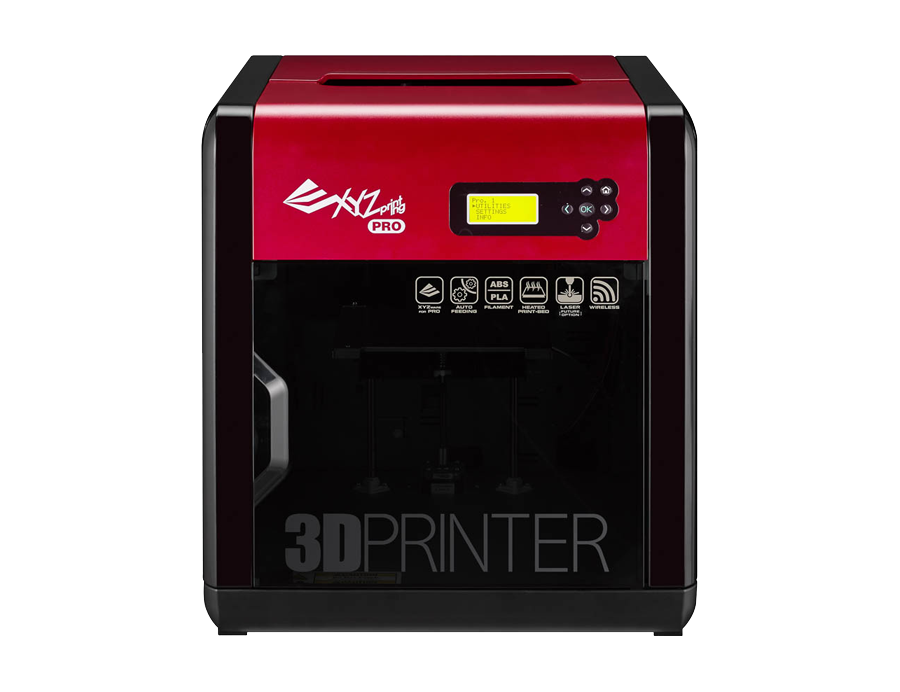 Don't worry though; our list of the best 3D printers should get you started.
Don't worry though; our list of the best 3D printers should get you started.
Our list of the best 3D printers provides clear and concise information about all kinds of 3D printers, so you can find the best 3D printer for whatever your needs. And we've included our exclusive price comparison tool, so you can be sure you'll find the best deal on your dream 3D printer - don't wait Black Friday and Cyber Monday .
Just keep in mind that because this list is so diverse - and the 3D printers in it are designed for different use cases - we didn't list them in any particular order.
- Original PRUSA i3 MK3s
- CEL-UK RoboxPro
- Ultimaker S3
- FormLabs Form 3
- Original PRUSA SL1
- TRILAB DeltiQ 2
- Ultimaker 2+
- CEL-UK RoboxDual
- LulzBot Mini 2
- XYZPrinting da Vinci Mini+
- Crazy3DPrint CZ-100
- AnyCubic Photon
- Find out which printers made it into our Top 10 Business Printers
(Image credit: original)
1.
 Original PRUSA i3 MK3s
Original PRUSA i3 MK3s Best all-in-one 3D printer
Print technology: Fused deposition simulation | Filament diameter: 1.75 mm | Building area: 250 x 210 x 210 mm | Minimum layer resolution: 50 microns | Maximum layer resolution: 350 microns | Dimensions: 550 × 400 × 500 mm | Weight: 7kg w/o spool
Check WalmartCheck AmazonSee all prices (2 found) High print speedMarket-leading print qualityOpen design
PRUSA Research is a dominant force in the 3D printing community and the MK3 is their flagship machine. Available as a kit, expert build, or as a set of plans to build your own, there's something here for every level of user. The expert build improves on everything that came before and is considered the best FDM 3D printer on the market. Print speeds are fast, and thanks to the latest Trinamic2130 drivers and Noctua fan, this machine runs almost silently.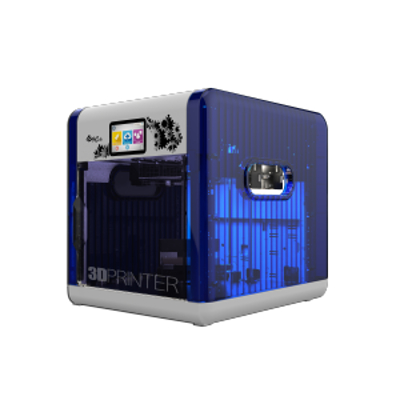 Powerful enhancements such as filament sensors, Bondtech extruder, P.I.N.D.A. 2 probes and the market-leading E3D V6 nozzle deliver unparalleled print quality. The features and print quality make the MK3s the best all-around printer.
Powerful enhancements such as filament sensors, Bondtech extruder, P.I.N.D.A. 2 probes and the market-leading E3D V6 nozzle deliver unparalleled print quality. The features and print quality make the MK3s the best all-around printer.
Buy from Prusa Research
(Image credit: CEL-UK)
2. CEL-UK RoboxPro
Best for commercial printing
Print technology: Fused deposition simulation | Filament diameter: 1.75 mm | Building area: 210 x 300 x 400 mm | Minimum layer resolution: 50 microns | Maximum layer resolution: 500 µm | Dimensions: 513x508x605 mm | Weight: 26kg
Check WalmartCheck AmazonSee all prices (2 found) Replaceable PrintheadsNetwork ReadyLarge Scale Printer
CEL-UK is a leader in 3D printing innovation with original Robox printers introducing many new features to the 3D world FDM printers. RoboxPro is Robox on a grand scale with a feature set that reads like a 3D printing wishlist; automatic filament loading, automatic layer alignment, Wi-Fi, network printing and interchangeable tool heads. The focus of the machine is on quality and reliability, designed for those who need a printer capable of bringing product ideas to life and bringing it to market. The closed design makes it ideal for commercial and educational use..
RoboxPro is Robox on a grand scale with a feature set that reads like a 3D printing wishlist; automatic filament loading, automatic layer alignment, Wi-Fi, network printing and interchangeable tool heads. The focus of the machine is on quality and reliability, designed for those who need a printer capable of bringing product ideas to life and bringing it to market. The closed design makes it ideal for commercial and educational use..
(Image credit: Ultimaker)
3. Ultimaker S3
Best for College Education
Print Technology: Fused Deposition Simulation | Filament diameter: 2.85 mm | Building area: 230 x 190 x 200 mm | Minimum layer resolution: 20 microns | Maximum layer resolution: 600 µm | Dimensions: 394 x 489 x 637 mm | Weight: 14.4kg
Check WalmartCheck AmazonSee all prices (2 found) Best-in-class print qualityEasy to networkExpensive
Ultimaker has been one of the hottest 3D printer manufacturers ever since 3D printing became mainstream.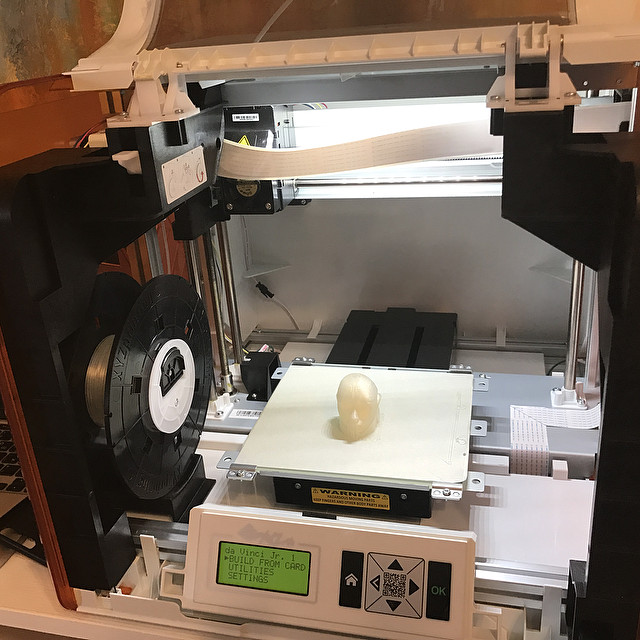 Ultimaker S3 is the next generation printer with speed, quality and reliability. While the machine makes a small mark of preference for open source Ultimakers, this one, and the rest of the new S line, break new ground when it comes to usability and business integration. S3 is aimed at educational and commercial markets and offers a wide range of accessories and materials to meet any designer's needs. Highlights include replaceable cartridges, a market-leading touch screen interface, and Cura cutting software..
Ultimaker S3 is the next generation printer with speed, quality and reliability. While the machine makes a small mark of preference for open source Ultimakers, this one, and the rest of the new S line, break new ground when it comes to usability and business integration. S3 is aimed at educational and commercial markets and offers a wide range of accessories and materials to meet any designer's needs. Highlights include replaceable cartridges, a market-leading touch screen interface, and Cura cutting software..
(Image credit: FormLabs)
4. FormLabs Form 3
Best SLA Printer
Print Technology: Stereolithography | Resin type: Multiple | Building area: 145 × 145 × 185 mm | Minimum layer resolution: 25 microns | Maximum layer resolution: 300 µm | Dimensions: 405 x 375 x 530 mm | Weight: 17.5KG
Check WalmartCheck AmazonSee all prices (2 found) High quality printingWide material supportSL prints require cleaning
FormLabs specializes in resin SLA 3D printers and plays an important role in the development and development of this technology.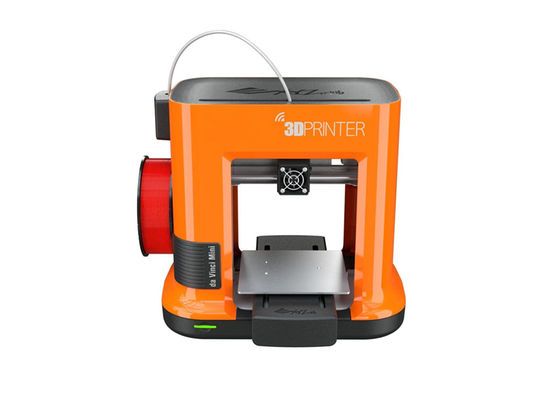 The Form 3 is the smallest of their machines but has a wide appeal due to the use of a high precision laser that delivers unparalleled print quality, far superior to FDM printers. As with all SLA printers, liquid resin is used rather than solid filament, so it takes more time to prepare and process prints, which is not suitable for all users. However, the breadth of materials and technology makes the Form 3 one of the most versatile 3D printers on the market. Ideal for high quality prototypes, jewelry, casting and manufacturing.
The Form 3 is the smallest of their machines but has a wide appeal due to the use of a high precision laser that delivers unparalleled print quality, far superior to FDM printers. As with all SLA printers, liquid resin is used rather than solid filament, so it takes more time to prepare and process prints, which is not suitable for all users. However, the breadth of materials and technology makes the Form 3 one of the most versatile 3D printers on the market. Ideal for high quality prototypes, jewelry, casting and manufacturing.
(Image credit: original)
5. Original PRUSA SL1
Best MSLA printer
Print technology: Stereolithography | Resin type: 405nm | Building area: 120 x 68 x 150 mm | Minimum layer resolution: 25 microns | Maximum layer resolution: 100 µm | Dimensions: 400 × 237 × 225 mm
Check WalmartCheck AmazonSee all prices (2 found) High quality printingWide material supportSL prints require cleaning
Prusa Research has revolutionized the FDM 3D printer market and the SL1 looks set to do the same for SLA printers. Although the printer uses stereolithography technology, it is a small variant known as MSLA. It uses an LCD and a UV LED for resin exposure and is much cheaper than high precision lasers like Form 3. While the components may be cheaper, the results are backed by PrusaSlicer's excellent software and tremendous openness. Coming from the community, SL1 looks set to be a game changer in the SLA market.
Although the printer uses stereolithography technology, it is a small variant known as MSLA. It uses an LCD and a UV LED for resin exposure and is much cheaper than high precision lasers like Form 3. While the components may be cheaper, the results are backed by PrusaSlicer's excellent software and tremendous openness. Coming from the community, SL1 looks set to be a game changer in the SLA market.
(Image credit: TRILAB)
6. TRILAB DeltiQ 2
Best Delta 3D Printer
Print Technology: Fused Deposition Simulation | Filament diameter: 1.75 | Building area: 250 x 250 x 300 mm | Minimum layer resolution: 50 microns | Maximum layer resolution: Nozzle dependent | Dimensions: 410 × 500 × 810 mm | Weight: 10kg
Check WalmartCheck AmazonSee all prices (2 found) Latest TechnologyVersatile and ExpandableIntegrated Machine
Delta 3D printers are very different from standard Cartesian 3D printers as the printhead is suspended on three articulated arms.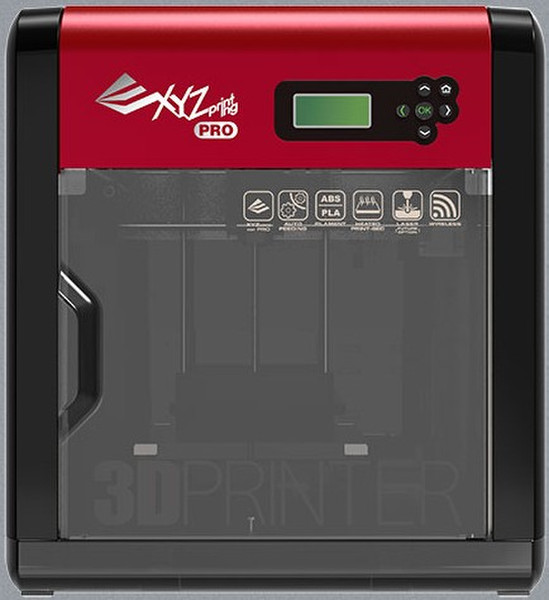 The approach means that the footprint of machines can be much smaller, and as a static basis, complex models can be a printer with less support material. The DeltiQ 2 features read like a wishlist of 3D features and components. These include E3D hotend, Duet 2 Wifi control board, mobile control and interface, and of course excellent print quality.
The approach means that the footprint of machines can be much smaller, and as a static basis, complex models can be a printer with less support material. The DeltiQ 2 features read like a wishlist of 3D features and components. These include E3D hotend, Duet 2 Wifi control board, mobile control and interface, and of course excellent print quality.
Ultimaker 2+
7. Ultimaker 2+
Best Professional 3D Printer
Print Technology: Fused Deposition Simulation | Minimum layer resolution: 20 microns | Maximum layer resolution: 600 µm | Dimensions: 342 x 493 x 588 mm | Weight: 11.3kg
$2499.53 View at Amazon $4,408.53 View at AmazonCheck WalmartSee all prices (4 found) 11 Amazon customer reviews ☆☆☆☆☆ High resolutionOpen source hardware and software supportMain interfaceOpen design
The Ultimaker 2+ is a 3D printer that offers superior print quality making it one of the best 3D printers for professional use. It's incredibly reliable when it comes to producing 3D models, and the accuracy of the 3D copies is incredibly impressive. If you want a 3D printer that can accurately reproduce many 3D objects, this is a fantastic choice. It's expensive, though, and the fact that it's aimed at a professional environment means it's less beginner-friendly than some of the other 3D printers around here. Home users are better off looking elsewhere.
It's incredibly reliable when it comes to producing 3D models, and the accuracy of the 3D copies is incredibly impressive. If you want a 3D printer that can accurately reproduce many 3D objects, this is a fantastic choice. It's expensive, though, and the fact that it's aimed at a professional environment means it's less beginner-friendly than some of the other 3D printers around here. Home users are better off looking elsewhere.
- Here's our pick of the best traditional 2D printers
(Image credit: CEL-UK)
8. CEL-UK RoboxDual
Best for Schools & Businesses
Print Technology: Fused Modeling Deposit 15 x 15 x 20056 | Minimum layer resolution: 50 microns | Maximum layer resolution: 500 µm | Dimensions: 410 x 340 x 240 mm
Check WalmartCheck AmazonSee all prices (2 found) Very easy to use Reliable Advanced features require proprietary filament
Few manufacturers have paid as much attention to 3D printing as CEL-UK.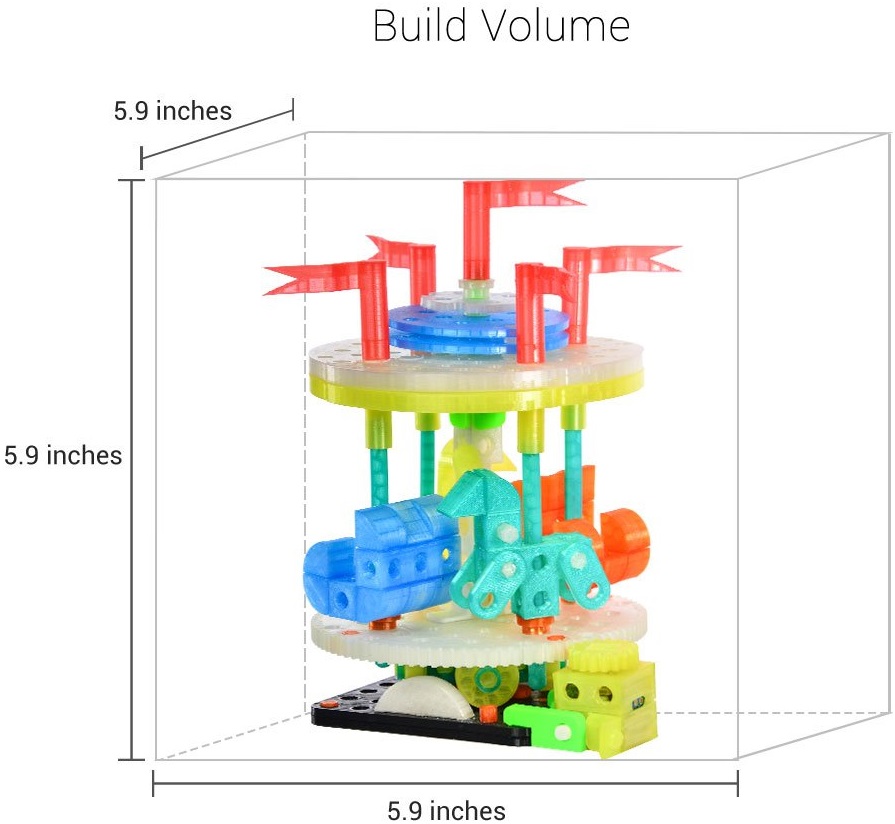 From AutoMaker software that allows you to prepare and control printouts on printers, to special features and accessories that help with iterative design and production. RoboxDual has been designed to adapt to any level of user. SmartReel, interchangeable Headlocks, automatic thread loading, bed leveling make it ideal for use in schools. While with the addition of networking, the inclusion of Root or Mote is perfect for design agencies and engineers working at scale.
From AutoMaker software that allows you to prepare and control printouts on printers, to special features and accessories that help with iterative design and production. RoboxDual has been designed to adapt to any level of user. SmartReel, interchangeable Headlocks, automatic thread loading, bed leveling make it ideal for use in schools. While with the addition of networking, the inclusion of Root or Mote is perfect for design agencies and engineers working at scale.
(Image credit: LulzBot)
9. LulzBot Mini 2
Another great 3D printer for beginners
Print technology: Fused deposition modeling | Building area: 160 x 160 x 180 mm | Minimum layer resolution: 50 microns | Maximum layer resolution: 400 µm | Dimensions: 457 mm x 339 mm x 607 mm | Weight: 9kg
$1750 View at Amazon $2,041.88 View at WalmartSee all prices (4 found) 13 Amazon customer reviews ☆☆☆☆☆ Very easy to use Open source Open frame design
If you're looking for your first 3D printer to study ropes, then the LulzBot Mini 2 is another great choice.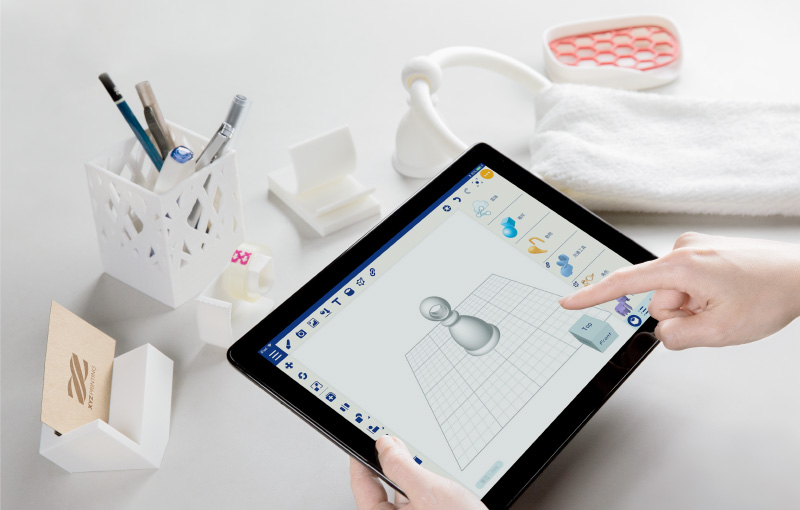 It's decently priced and easy to use, and version 2 improves print speed and reduces noise. It's open source hardware, which means it has the flexibility that conciliatory hardware lacks, as a dedicated community of manufacturers can work together to build printer add-ons.
It's decently priced and easy to use, and version 2 improves print speed and reduces noise. It's open source hardware, which means it has the flexibility that conciliatory hardware lacks, as a dedicated community of manufacturers can work together to build printer add-ons.
(Image credit: XYZprinting)0003
10. XYZ Da Vinci Printing Mini+
Best Budget Family 3D Printer
Print Technology: Fused Filament | Building area: 150 x 150 x 150 mm | Minimum layer resolution: 100 µm | Maximum layer resolution: 400 µm | Dimensions: 390 x 335 x 360 mm | Weight: 6.85kg
$129.95View at Amazon $159.95View at Walmart $169.95View at Best BuySee all prices (6 found) Low priceEasy to useDesign can make printed objects difficult to remove
If you're looking for a budget 3D printer, there really is no better option than the XYZprinting da Vinci Mini+. It remains one of the most accessible ways to access 3D printing, and also the easiest, thanks to its easy-to-use interface. Just because it's a budget model doesn't mean it doesn't produce good results, and the 3D print objects it creates are impressive given the price and size of this 3D printer. Speaking of size, the XYZprinting da Vinci Mini is an impressively compact printer that makes it easy to store in the office or on your desk..
It remains one of the most accessible ways to access 3D printing, and also the easiest, thanks to its easy-to-use interface. Just because it's a budget model doesn't mean it doesn't produce good results, and the 3D print objects it creates are impressive given the price and size of this 3D printer. Speaking of size, the XYZprinting da Vinci Mini is an impressively compact printer that makes it easy to store in the office or on your desk..
(Image credit: Crazy3DPrint)
11. Crazy3DPrint CZ-100
Best Budget 3D Printer
Print Technology: Fused Filament | Building area: 300 x 300 x 300 mm | Minimum layer resolution: 100 µm | Maximum layer resolution: 400 µm | Dimensions: 534 x 503 x 582 mm | Weight: 16.5kg
Check WalmartCheck AmazonSee all prices (2 found) Low priceEasy to useLarge print platform
If you want to learn about 3D printing on a budget, then the CZ-300 is the perfect starting point. The open design lets you see all of the printer's work, and Crazy3DPrint ensures that while it's a budget printer, money has been spent where it counts. Despite being a budget offering, this printer boasts one of the largest print platforms of any printer on the market with a whopping 300 x 300 x 300mm. The initial setup is simple initially, but you'll need to keep a close eye on manually leveling the bed, if you get it right, the CZ-300 will reward you with amazingly high quality prints.
The open design lets you see all of the printer's work, and Crazy3DPrint ensures that while it's a budget printer, money has been spent where it counts. Despite being a budget offering, this printer boasts one of the largest print platforms of any printer on the market with a whopping 300 x 300 x 300mm. The initial setup is simple initially, but you'll need to keep a close eye on manually leveling the bed, if you get it right, the CZ-300 will reward you with amazingly high quality prints.
(Image credit: AnyCubic)
12. AnyCubic Photon
Best Budget Printer MSLA
Print Technology: Stereolithography | Resin type: 405nm | Building area: 115 x 65 x 155 mm | Minimum layer resolution: 25 microns | Maximum layer resolution: 100 µm | Dimensions: 220 x 200 x 400 mm
$399.99 View at Banggood.com Check Walmart Check Amazon0003
MSLA printers go fast and fast, but none of them have reached as low a price as the AnyCubic Photon. It may not have many of the more advanced features, such as resin bath tilt sensors, temperature or resin level sensors, that you'll find on more expensive models, but Photon puts SLA technology in the hands of anyone who wants to try it. budget. The included software is solid enough, as is the user interface if it's a bit simplistic, but you can't argue with the quality of the prints you get. However, you must make sure everything is clean, the resin is filtered and the resin bath is rinsed between each print..
It may not have many of the more advanced features, such as resin bath tilt sensors, temperature or resin level sensors, that you'll find on more expensive models, but Photon puts SLA technology in the hands of anyone who wants to try it. budget. The included software is solid enough, as is the user interface if it's a bit simplistic, but you can't argue with the quality of the prints you get. However, you must make sure everything is clean, the resin is filtered and the resin bath is rinsed between each print..
The 7 Best 3D Printers for Beginners in 2020
Our editors independently research, test and recommend the best products; You can learn more about our
review process here. We may earn commissions for purchases made through the links we select.
Our Top Picks
Best Overall: Tiertime Up Mini 2 at Amazon
"The Mini 2 has an array of security features, including a kid-friendly door check and a built-in air filtration system. "
"
Best Value: XYZprinting da Vinci Nano at Amazon
"If you're looking to dip your toe into the world of 3D printing with an affordable model, the XYZ da Vinci Nano is a great option."
Best Budget: 3Doodler Create 3D Pen at Amazon
"The Create 3D Pen allows you to quickly and easily create 3D shapes without needing to first design them on a computer."
Best for Tinkerers: Monoprice Select Mini 2 at Amazon
"This printer offers built-in software and can work with your slicer of choice."
Most Versatile: FlashForge Finder at Amazon
"The printer supports a 3D Cloud function which enables you to store your models online and check your printing status."
Best Splurge: MakerBot Replicator Mini+ at Amazon
"The 3D printer offers excellent print quality and is 10%-faster than its predecessor. "
"
Best for Large Builds: Creality3D CR-10 at Amazon
"The Creality3D CR-10 Max has a simple, easy-to-understand design and an intuitive control box."
Top Score: Tiertime Up Mini 2
Provided by Amazon
Buy on Amazon
Buy on B&H Photo Video
Tiertime Up Mini 2 may not be the cheapest option on our list, but if you're serious about 3D printing, it's worth the investment. The machine boasts a number of high-end features that you might not expect from an entry-level model; First, it's an extremely reliable device with a solid build that costs less than $1,000. In addition, Tiertime Up Mini 2 can connect via Wi-Fi or USB, has a touchscreen for ease of use, and runs the powerful and relatively easy-to-learn Tiertime Up Studio software. You can connect to the printer through the dedicated iOS app on your iPhone or iPad and jobs can be queued just like they would on a traditional printer.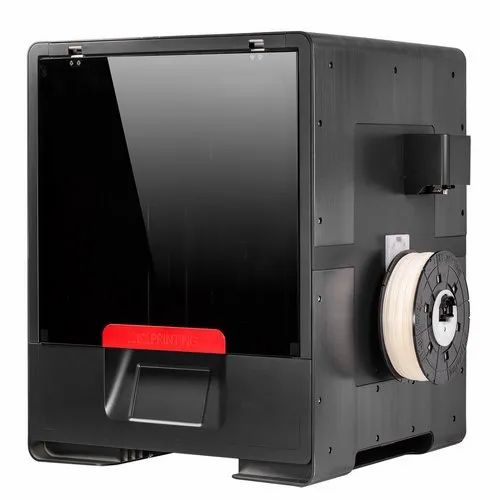
When it comes to consumables, Tiertime also makes filament (in eight different colors) that works with the Mini 2, but you can also use other more economical brands of filament. The 14-pound printer is well designed and should look right at home on any desk, but even better, it's safety-conscious. The Mini 2 has a range of safety features, including child-friendly door controls and a built-in air filtration system. The device has a build volume of 4.7" x 4.7" x 4.7" and runs at 51 decibels.
Best Price: XYZ Da Vinci Nano
Buy on Amazon
Buy on Newegg.com
If you're looking to dip your toe into the world of 3D printing with an affordable model, the XYZ da Vinci Nano is a great option. Priced below $200, there are plenty of things to love about the printer - even beyond its wallet-friendly price. Firstly, the da Vinci Nano is super easy to use as it runs XYZprinting software which is free and compatible with Mac, Windows, and Linux. You can also access more than 30 printing lessons through XYZprinting online. The unit is able to print monochrome builds up to 4.7″ x 4.7″ x 4.7″ using PLA and PETG materials. A non-heated print bed and fully-enclosed design make it suitable for use in classrooms and at home even if you have small children.
You can also access more than 30 printing lessons through XYZprinting online. The unit is able to print monochrome builds up to 4.7″ x 4.7″ x 4.7″ using PLA and PETG materials. A non-heated print bed and fully-enclosed design make it suitable for use in classrooms and at home even if you have small children.
Of course, at such a low price, the XYZprinting da Vinci Nano has a few drawbacks. For starters, the device only works with PLA XYZ filament, so you can't use third party filament when you're done. On top of that, the device prints relatively slowly at 70mm/s - though that's a small concession for such a versatile and inexpensive machine.
Best Budget: 3Doodler Create 3D Pen
Buy on Amazon
Buy on Newegg.com
Buy at B&H Photo Video
If you're on a budget, the 3Doodler Create 3D Pen is worth considering. While it's admittedly not a traditional 3D printer, it still works like one - and might be your only real option in the sub-$75 range. Create a 3D Pen exactly as it sounds; it's basically a pen that emits instant cooling filament so you can "draw" the figure in 3D.
The good news for beginners is that the Create 3D Pen allows you to quickly and easily create 3D shapes without having to design them on a computer first. Plus, there is little to no setup required—simply insert the thread into the pen and start creating shapes. All you have to do is turn on the pen, set its temperature and press the fast or slow button to get started. The pen comes with five designs, but you can also download additional free tutorials online. The pen measures 6.3" x 0.7" x 0.7" and weighs 12.8 ounces, so it's easy to transport.
Best for Tinkerers: Monoprice Select Mini 2
Buy on Amazon
The Monoprice Select Mini 2 is a great mid-range printer for beginners, especially those who like to tinker. The 3D printer is a bit advanced compared to the others on our list; It offers built-in software and can work with your slicer of choice. This means that if you're already familiar with a popular program like Cura or Repetier, for example, you're good to go. There are other things the Monoprice Select Mini 2 also likes; It comes fully assembled so you don't have to put it together, it has a MicroSDTM card with models pre-installed, it can handle a wide range of filaments, it prints at 55mm/s and has a 3.7" IPS screen for easy navigation .
The Monoprice Select Mini 2, on the other hand, has a relatively small build volume given its open design (4.7" x 4.7" x 4.7") and it doesn't have a protective cover - so you'll need to be especially careful regarding the heated mounting plate,
Most versatile: FlashForge Finder
Buy on Amazon
If you are buying a 3D printer that works with any system and in any connection mode, FlashForge Finder can be the printer for you. Not only is it compatible with Windows, Mac, and Linux computers, but it can also connect via a USB cable, via Wi-Fi, or even via a USB stick. The 3D printer also has a host of smart features, including an assisted leveling system that - with instructions on the printer's 3.5-inch color touch screen - can help you calibrate the build plate for accurate printing. Speaking of the build plate, the FlashForge Finder stays cool and slides out of the machine, making removing prints super easy. The printer also supports the 3D Cloud feature, which allows you to store models online and check the print status.
If you use the Finder at home, you'll appreciate how quiet it is. Operating at 50 decibels and below (about the same as your refrigerator), it's suitable for nighttime use - even if you have little sleepers. When it comes to filament, the machine only prints PLA, but the Finder comes with a free spool and you can buy other brands of refills.
Best Splurge: MakerBot Replicator Mini +
Buy on Amazon
9The 0002 MakerBot Replicator Mini+ certainly isn't cheap, but if you'd rather invest in a fully functional machine that you can really build your skills with, this is a great choice. You can easily control your machine by linking it with the MakerBot Print and MakerBot Mobile software; since the device runs in the cloud, this allows you to run it remotely via your phone or computer. Another big plus is its factory-aligned build plate that features a Grip Surface to ensure your builds are strong as they print and warp less once completed. There's also automatic stuck detection and thread exit notification, so you'll know if your project has run into any issues. Please note that the unit only works with the MakerBot filament and can get quite loud, so it's probably not the best option for nighttime use at home.



